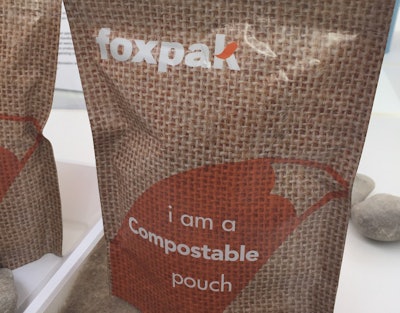
More than 60% of pet owners in five countries said they would be willing to pay more for a pet food product in more environmentally friendly packaging. That’s according to a survey conducted by Yummypets, a France-based social community for pet lovers, earlier this year.
At the same time, packaging professionals from around the world reported significant challenges in bringing more sustainable packaging to the market, including 71% saying quality control processes with sustainable packaging materials are more difficult. That’s from a survey conducted by Industrial Physics, a global packaging, product and material test and inspection company.
Of course, the challenges in producing sustainable packaging contribute significantly to the increased costs for such packages, setting up a natural tension with some consumers leery of paying for the increases.
Are pet owners really willing to pay more?
The Yummypets survey comprised more than 1,500 pet owners from Belgium, Canada, France, U.K. and U.S.; the results were reported by David Palacios Rubio, editorial manager of GlobalPets magazine. In the survey, 30% of respondents said they would certainly be willing to pay more for more sustainable packaging for pet foods, while 33.2% said they probably would. Those positive responses were balanced by 24.3% who said they don’t know, 9.4% who said no, probably not, and 2.9% who were a definite no.
Breaking the results down by country, 37.8% of British owners and 37.3% of French owners seemed “most eager” to pay for pet products in paper or recyclable packaging, Rubio wrote. That was followed by Americans at 34.9% and Belgians and 33.2%. (No separate results for Canada were given; presumably, they were lower than those of the other countries.)
For context, it’s worth noting that a significant majority, 82.2%, of pet owners from all five countries believe it’s important for a pet product to be manufactured by an environmentally friendly company, yet the willingness to pay more for sustainability does not match that sentiment. Besides sustainable packaging, the survey also asked about sustainably produced pet products; and only French owners, at 37.3%, seemed as willing to pay more for those as they are for sustainable packaging.
Then the levels started falling in terms of paying more for sustainable production: 35.4% for British owners and only 24% for U.S. owners. (Again, Rubio did not report separate results for Canada or, in this case, Belgium.)
The disconnect could come from this: 41.7% of respondents said they’re skeptical of pet food companies’ sustainability claims, with only 29.6% believing them. “French (48.5%) and American (43.3%) pet owners are the most skeptical,” Rubio wrote.
Packaging suppliers feel the pain, too
The skepticism expressed by those pet owners related to multiple aspects of sustainability in pet foods, not just packaging. Specific to the packaging, doubts could arise at least partially from the confusion consumers often feel when confronted with the many recyclable and sustainable claims and symbols on products, in many categories (like human food), not just pet food.
“While sustainability is becoming more popular, consumers can be confused by claims on packaging regarding formulation and recycling,” said Haley Randolph, operations manager for Ubuntoo, a global collaboration platform that connects innovators and professionals to accelerate sustainable economic growth, in a Petfood Industry article by Editor Lindsay Beaton. “The increase in lawsuits against companies claiming that their packaging is recyclable shows that consumers are paying attention and don't want to be misled by dubious claims. Consumers want packaging that isn't just technically recyclable, but feasibly recyclable.”
Add to all that the difficulty in creating sustainable packaging materials in the first place, and it’s no wonder there are no easy answers for pet owners, or pet food brands for that matter. In the Industrial Physics survey, 66% of respondents said cost was the main supply challenge in creating more sustainable packaging, and 49% cited testing standards. That’s in addition to the quality control issues, which are exacerbated by increasing costs, and vice versa.
“Global supply obstacles caused by the pandemic made sourcing more difficult, and legacy issues remain, meaning numerous suppliers are often needed rather than one trusted provider,” wrote Industrial Physics in a release about its report. “This places additional pressure on quality control processes and greater need for packaging integrity testing.”
In addition, survey respondents mentioned optimizing packaging material performance to protect the product (53%) and passing increased costs onto consumers (50%) as challenges.
Sustainable packaging solutions on the horizon
Part of the pain around sustainable packaging—for consumers, manufacturers and suppliers alike—results from the fact that this is still a relatively nascent field, with constantly evolving technologies and solutions. The good news is that evolution: Research and projects are increasing to develop and improve technologies, recycling practices and programs, and consumer education. A great example in the pet food world is the Pet Sustainability Coalition’s ongoing Forward Flex project to increase recycling of packaging, plus the organization’s new packaging pledge.
On the supplier side, the Industrial Physics survey showed packaging professionals believe new standards (at 52.5%) and new legislation or regulations (at 41.6%) will have the largest influence on sustainable packaging innovation in the next five years.
















